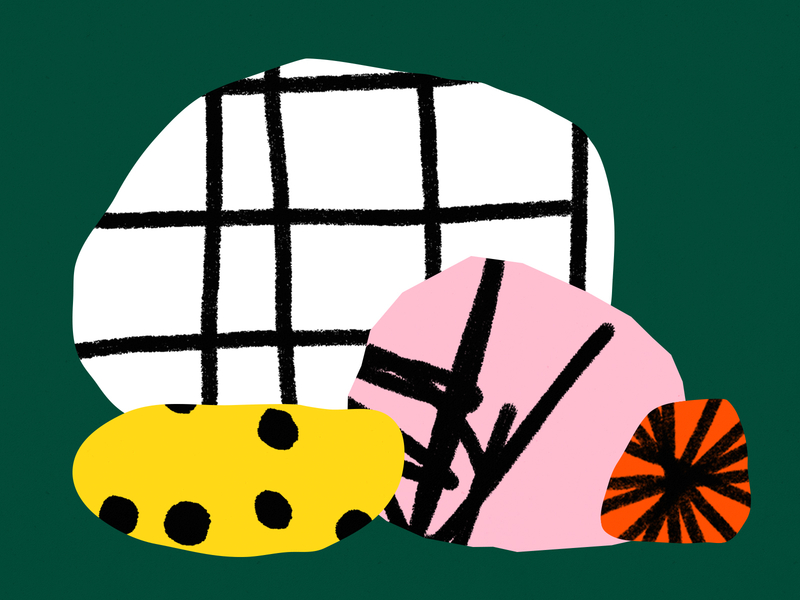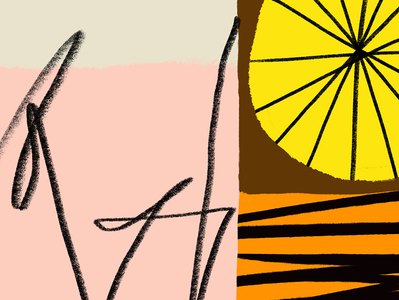![]() Creative director and former preschool teacher Abby Milan joins us today to share a personal story about re-discovering creativity despite life’s obstacles, and how children can teach us to be more fearless designers ■
Creative director and former preschool teacher Abby Milan joins us today to share a personal story about re-discovering creativity despite life’s obstacles, and how children can teach us to be more fearless designers ■
I became a preschool teacher right out of Art School. As a student with a type-A personality, my design work was always rigidly planned, thoroughly researched, and meticulously edited. I’d been known to spend hours making sure something looked right. So naturally, I was slightly disappointed when the group of 3-year-olds I’d been assigned showed absolutely no interest in collaging a flower with construction paper. They found Elmer’s Glue infinitely more interesting, covering themselves in the sticky, white substance.
It took me a while to let go. My co-teacher and I planned coloring, painting, sculpting, and cooking lessons. Each lesson plan was interrupted by at least one kiddo’s desire to do something different. Every. Single. Time. We had a little boy who loved the color pink—he’d dry up all our pink markers coloring in not only illustrations of flamingos but also turtles, elephants, puppies, and whales. Another little one who chose to taste everything—whether it was edible or not. And a sharp little girl who discovered that if she got dirty she’d be asked to wash her hands in the sink, which we quickly discovered to be her utopia; she’d thrash in the stream of water, creating a mess of puddles.
Kids have this way of teaching you things no one else can; their passion for learning, shameless honesty, and untethered confidence are attributes to admire. Sadly, these qualities have a tendency to dissipate around kindergarten. At some point, we’re taught (by teachers, parents, peers, and society) that things should be done a certain way—and that kills our creativity. Fast.
Eventually, my co-teacher and I tuned into what the kids were asking for. We planned around their desires: watercolor play with straws and bubbles, edible play-dough, slime recipes, and group free-draw on giant rolls of Kraft paper. They flourished in this environment, and so did we.

Disjointed — Abby Milan.
I taught for a couple of years, ultimately deciding I needed to get back to my art practice. I had run into a creative rut—unable to produce anything I was happy with, so I quit teaching, took a serving gig at a local restaurant to pay the bills, and focused my energies on my true passion. Not two months later, though, as I was delivering margaritas to customers, I fell on broken glass and tore three tendons and the ulnar nerve in my dominant hand. I couldn’t brush my hair let alone create or design anything. I felt broken, lost, and anxious.
Consumed by self-doubt and depression, my newfound momentum for creating waned. My days were filled with insurance provider calls and doctor’s appointments and surgeries. I had to re-learn how to cook myself dinner, get dressed, go to the bathroom. I wasn’t yet ready to re-learn my craft, so instead, I watched hundreds of Grey’s Anatomy episodes, finding solace in the fictional characters’ horrible diagnoses.
Months passed before I felt brave enough to touch pencil to paper again, and when I did, it was as difficult as I had imagined it would be. But I kept at it. When my hand would tire from drawing, I’d contemplate my drive. Surely boredom played a part: I could only watch so many re-runs depicting horrific medical cases. But something else was pushing me forward, too. Was it my doctor? My physical therapist? My parents? Friends? In part, yes, but not specifically. I looked over at my drawings—shaky contours that made up images of chairs, feet, plants, yogurt cups, water glasses, door frames, and laundry baskets—and I realized: my preschool students were my inspiration.
To watch a child discover through art and craft is a magical thing. They have zero fear when it comes to creating. They try things for the simple joy it brings them. They select materials and do things because it feels right. And their pieces benefit from this: holding emotion that’s somewhat indescribable to us adults.
My students taught me that new experiences help us gain insight, that exploration results in joy, and that nothing needs to be perfect. They showed me how to re-discover what was important to me in my own work. I found a new medium, set aside my fears, and started designing again.

Simple Chair — Abby Milan.
Final thoughts
At day 70-something of this worldwide pandemic, it’s easy to feel shaken and lost. Just like being told how things should be done, stress and anxiety can affect our creativity. If you find yourself in a similar rut, take a note from the kiddos. Design with your inner child in mind.
- Explore something new: Kids are doing everything for the very first time. They have no fear of being “good” or “bad” because they have nothing to compare to their own success. Use a different medium, work with your non-dominant hand, or try out a drastically different style than you’re used to.
- Tap into your sensory desires: Finger paint, sculpt with clay, draw what your favorite song looks like. Use all of your senses and delve in deep.
- Ask “why?” Kids incessantly ask the simple question, “why?”. They’re constantly learning, connecting ideas and patterns into what shapes their view of the world. It’s important to continue doing this as adults to allow our views to change. Question everything you create. Why must you make it? Why with that particular medium? Why now? Why here? This will open your eyes and help you to create more conceptual work.
- Learn from those before you: Kids often learn by mimicking. If you’re learning a new craft, there’s nothing wrong with studying how artists before you succeeded.
- Take things without judgment: Create with no regard for perspective or accuracy, but with all regard for feeling and emotion.
- Let go: Take a deep breath, let it out, and begin ■
![]() Abby Milan is a Creative Director who believes in kindness & bravery. A determined go-getter and diligent team-player, she works tirelessly to better others’ experiences. An INFJ personality type, her passions include essay writing, contour drawing, treat baking, neighborhood walking, home organizing, & people watching.
Abby Milan is a Creative Director who believes in kindness & bravery. A determined go-getter and diligent team-player, she works tirelessly to better others’ experiences. An INFJ personality type, her passions include essay writing, contour drawing, treat baking, neighborhood walking, home organizing, & people watching.
Want to keep up with Abby? Find her on Dribbble, Instagram, and at kindandbrave.co.
RELATED READING
- What a middle school art instructor can teach us about creativity
- 7 design professionals share nuggets of advice for recent grads
- Illustrating for print: The Picture Books of Tom Clohosy Cole
Find more Community stories on our blog Courtside. Have a suggestion? Contact stories@dribbble.com.










